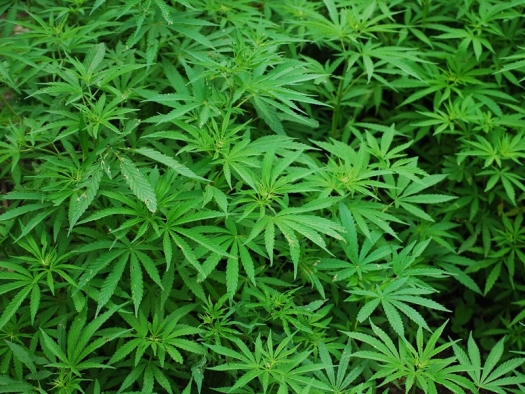CannabisFoliage.jpg

Photo by Rex Medlen / pixabay.com
FAIM has investigated cannabis to help educate people on its medicinal properties. The history of cannabis helps explain and hopefully dispel the fear and misunderstanding of cannabis.
Marijuana has been used as a medicinal plant for thousands of years dating back to 2727 B.C. in China. Since then it has been used in many cultures around the world. It was used to treat inflammation, malaria, gout, depression, nausea and as an anesthetic. The psychoactive component, THC, was used for rituals and religious ceremonies. The Spanish settlers brought it to the Americas in the 1500s and colonists grew marijuana and hemp for its fibers for rope. It is said that Thomas Jefferson and George Washington grew it on their plantations.
In the United States in the early 1900s there was an anti-Mexican sentiment and the U.S. government started a campaign connecting marijuana with Mexican drug use suggesting dangerous homicidal tendencies brought on if you used cannabis. Harry Anslinger ruled over the Federal Narcotics Bureau. He oversaw Prohibition, not giving much concern to cannabis and marijuana. However, when Prohibition ended, Anslinger thought he might be out of a job so he came up with a new threat to the American Way, creating the drug war. At first he focused on heroin and cocaine but he needed a broader base so he focused on marijuana, associating it with violence and crime. He created all kinds of mis-truths about marijuana and successfully mounted a campaign to vilify cannabis. In 1937 The Marijuana Tax Act made marijuana illegal. In 1968 the Nixon White House had two enemies: the antiwar left seen as hippies and the black community. Knowing they couldn’t make either illegal they successfully got the public to associate hippies with marijuana and the blacks with heroine, disrupting both communities.
In 1970 Nixon’s Controlled Substance Act, as a part of the War on Drugs, classified cannabis as a Schedule 1 drug in the same category as heroin, LSD, cocaine and ecstasy. It remains a Schedule 1 drug today making it very difficult to study its medicinal properties. In 1972 the National Commission on Marijuana and Drug Abuses explained there was a big misunderstanding around marijuana and insinuated it should not suffer the penalties of Schedule 1 drugs, but this report was ignored. Over the years, various presidents have taken a stand but the fact remains that classifying marijuana as a Schedule 1 drug has been a mistake which is politically motivated and not scientifically based. For that reason and due to the medicinal qualities of the plant, many states have now legalized it for their citizen’s benefit.
So what really is marijuana and what is it good for? FAIM’s research reveals a multitude of applications for many illnesses and diseases. Both hemp and marijuana have over 50 cannabinoids including cannabidiol (CBD) and tetrahydrocannabinol (THC). Hemp has a greater concentration of CBD, the non-psychoactive component. Marijuana has a higher concentration of THC, the psychoactive component. However in comparison to hemp, marijuana has a greater variety of terpenes, flavonoids and waxes that are medicinal as well. In states where marijuana is legal, patients often get a superior product by using the CBD/THC from the marijuana plant due to these additional factors. Marijuana is now being cultivated to have a higher concentration of CBD. FAIM believes that cannabinoids hold great promise for a new breed of medicine as plants are grown targeting specific cannabinoids, terpenes, flavonoids and waxes.
The discovery that the body has an entire system that naturally produces substances similar to CBD and THC is ground breaking. It is called the endocannabinoid system. Our innate cannabinoids are 2-AG, similar to the plant cannabinoid CBD, and anandamide similar to THC. We make 2-AG and anandamide continually and especially during activities like breast feeding, meditating and running, explaining the runner high. The endocannabinoid system does much more than that and when it is not operating normally many health issues result. For that reason, supplementing with plant cannabinoids helps ailments that cannabis addresses and reveals a bright future. The U.S. government is now investigating the effect of plant cannabinoids for stroke, inflammation, autoimmune issues, Alzheimer’s, Parkinson’s and other age related issues.
Currently almost every citizen can purchase CBD from hemp. In many states where cannabis is legal CBD/THC products from marijuana are available and possibly offer even more medicinal value
Imagine the future as more marijuana is cultivated targeting specific ratios of CBD to THC and specific terpenes and flavonoids. The benefit for those suffering from illness brought on by a dysfunctioning endocannabinoid system is exciting.
One last point. With the opioid crisis out of control in the U.S., cannabis offers light at the end of the tunnel. Cannabis can help addicts wean off opioids. Rather than being considered a “gate way drug” leading to more drug use, cannabis is actually an “exit drug” helping addicts recover from drug addiction.


